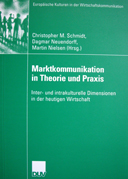 Persuasive texts, such as public information brochures or advertisements, aim to convince their readers to behave in a certain manner, such as to stop smoking or to buy a new car. If argumentation is used to achieve this aim, these texts are generally characterised by pragmatic argumentation, a form of argumentation by which an action is recommended on the basis of its favourable consequences. In order to enhance the persuasive effectiveness of these texts, writers may choose to support their claims with different types of evidence, namely statistical, anecdotal, causal, or expert evidence.
Persuasive texts, such as public information brochures or advertisements, aim to convince their readers to behave in a certain manner, such as to stop smoking or to buy a new car. If argumentation is used to achieve this aim, these texts are generally characterised by pragmatic argumentation, a form of argumentation by which an action is recommended on the basis of its favourable consequences. In order to enhance the persuasive effectiveness of these texts, writers may choose to support their claims with different types of evidence, namely statistical, anecdotal, causal, or expert evidence.
- Hornikx, J. (2004). Relative occurrence of evidence types in Dutch and French persuasive communication. In Ch. M. Schmidt, D. Neuendorff, & M. Nielsen (Eds.),Marktkommunikation in Theorie und Praxis: inter- und intrakulturelle Dimensionen in der heutigen Wirtschaft (pp. 291-307). Wiesbaden: Deutscher Universitäts-Verlag. [pdf]
